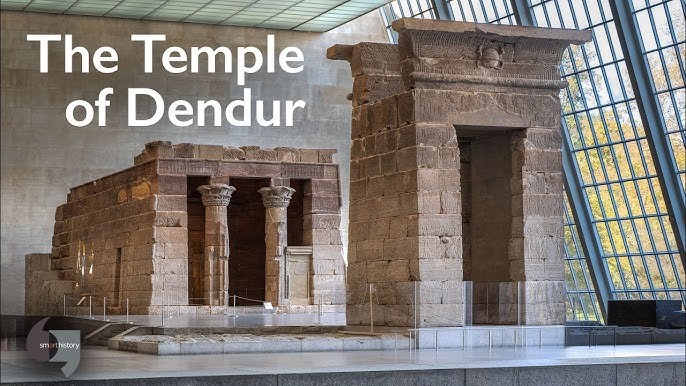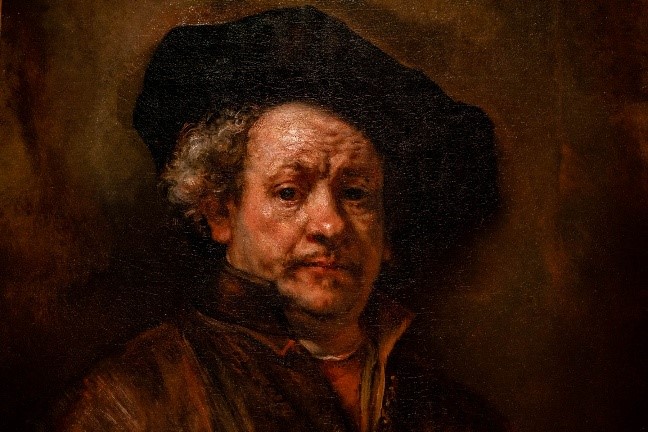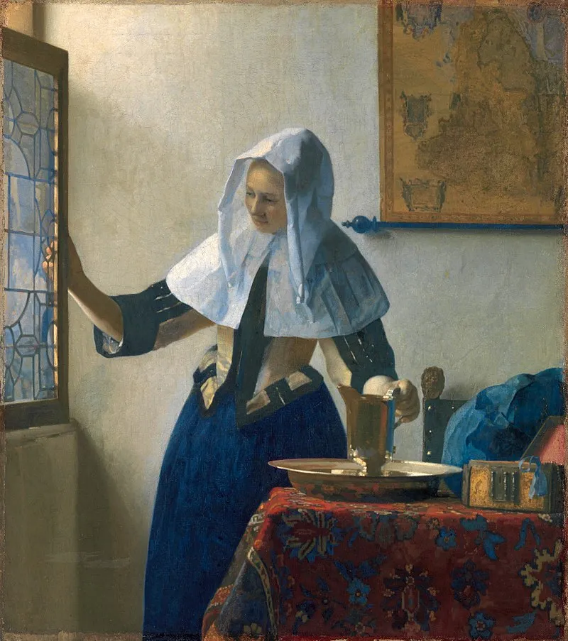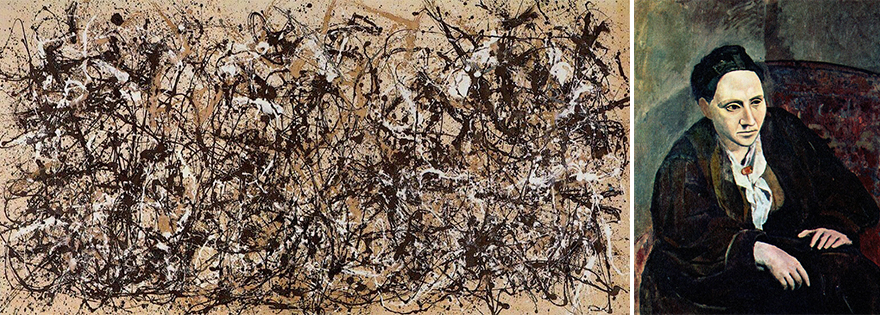The Met: Courage and Clarity
March 31, 2025

 As you know, I have already had some pretty overwhelming New York City museum experiences. But I was not quite ready for “The Met” experience. “The Met”, of course is the Metropolitan Museum of Art in New York City. “The Met” is overpowering. By floor area (over 2 million square feet), it is the fourth largest museum in the world and the largest art museum in America. With over 5 million visitors a year, it is the most-visited museum in the United States. Its permanent collection is over 2 million works and is divided into 17 curatorial departments. The Met is truly an international museum. It covers a time span of over 5,000 years including ancient Near East, ancient Egypt, ancient Greece, ancient Rome, African, Asian, European Old Masters, as well as American, modern and contemporary art.
As you know, I have already had some pretty overwhelming New York City museum experiences. But I was not quite ready for “The Met” experience. “The Met”, of course is the Metropolitan Museum of Art in New York City. “The Met” is overpowering. By floor area (over 2 million square feet), it is the fourth largest museum in the world and the largest art museum in America. With over 5 million visitors a year, it is the most-visited museum in the United States. Its permanent collection is over 2 million works and is divided into 17 curatorial departments. The Met is truly an international museum. It covers a time span of over 5,000 years including ancient Near East, ancient Egypt, ancient Greece, ancient Rome, African, Asian, European Old Masters, as well as American, modern and contemporary art.
 I started with the Temple of Dendur. To be clear, this is the actual and complete Temple of Dendur. Originally commissioned by Augustus Caesar, the emperor of Rome, in 23 BCE. Originally located in ancient Egypt near today’s Aswan, the Temple was dedicated to the Egyptian goddess Isis.
I started with the Temple of Dendur. To be clear, this is the actual and complete Temple of Dendur. Originally commissioned by Augustus Caesar, the emperor of Rome, in 23 BCE. Originally located in ancient Egypt near today’s Aswan, the Temple was dedicated to the Egyptian goddess Isis.
As I wandered in the massive and massively complex space, a sculpture grabbed my attention. In my ignorance, I assumed it was from ancient Greece or Rome. Turns out it was created by the French artist Carpeaux in the 1860s France. Another reminder of just how much I had to learn.
The next attention grabber was a painting of a very famous moment of Greek history: The Death of Socrates. Socrates dating back to 470 BC and is credited with inventing western philosophy in Athens Greece. A powerful influence, his teachings were controversial. Eventually he was accused of impiety and sentenced to death by drinking the poison hemlock. Rather than running away, he used the moment of his death to share a final lesson: to face our life with courage rather than running away from difficult moments. Socrates, did, in fact, calmly share his final thoughts surrounded by his followers, drank the poison hemlock and died. This profound moment was immortalized by the great French painter Jacque David in 1787.

 Another painting grabbed me by one of the greatest painters of all time, the Dutch painter Rembrandt. He painted this self portrait late in his life during the Dutch Golden Age. Rembrandt was an iconoclastic painter. He did not paint a phony prettified portrait of himself in his 60s. He painted an honest, “warts and all” portrait of an old man who would die with a couple of years at age 63. In some respects Rembrandt shared a theme with Socrates: have the courage to face the realities of life in general and your life in particular. One of the reasons these are masterpieces is because they speak to deep issues in life that we will face sooner or later like getting old and death.
Another painting grabbed me by one of the greatest painters of all time, the Dutch painter Rembrandt. He painted this self portrait late in his life during the Dutch Golden Age. Rembrandt was an iconoclastic painter. He did not paint a phony prettified portrait of himself in his 60s. He painted an honest, “warts and all” portrait of an old man who would die with a couple of years at age 63. In some respects Rembrandt shared a theme with Socrates: have the courage to face the realities of life in general and your life in particular. One of the reasons these are masterpieces is because they speak to deep issues in life that we will face sooner or later like getting old and death.
A huge painting capturing a courageous moment of General George Washington, Commander-in-Chief of the Revolutionary Army, crossing the Delaware River in 1776 during the American Revolutionary War — a compelling patriotic message. Painted in 1851.

 The next painting is very different. The painting is called “Woman with a Water Jug” a masterpiece painted another truly great painter — the Dutch painter Johannes Vermeer in 1660. A photo does not begin to do justice to this exquisite painting and Vermeer’s handling of light. I am reminded of my favorite director Stanley Kubrick and his masterpiece Barry Lyndon. Two geniuses separated by over 300 years, both are one-of-a-kind artists who share complete mastery of their art.
The next painting is very different. The painting is called “Woman with a Water Jug” a masterpiece painted another truly great painter — the Dutch painter Johannes Vermeer in 1660. A photo does not begin to do justice to this exquisite painting and Vermeer’s handling of light. I am reminded of my favorite director Stanley Kubrick and his masterpiece Barry Lyndon. Two geniuses separated by over 300 years, both are one-of-a-kind artists who share complete mastery of their art.
Now we make a 200-year leap. The first of two works by the French painter Edgar Degas is a brilliant painting called “The Dance Class.” Painted in 1873, Degas painted more than 40 paintings devoted to the Ballet.
The second work is a sculpture by Degas, “The Little Fourteen-Year-Old Dancer” completed in 1880. The sculpture embodies charm and innocence.
After 3 hours, I was saturated with cultural richness. Remember, this was all new to me. And to experience one masterpiece after another, and I am only sharing a tiny percentage of what I actually saw. I had to take a break. I went to the ground floor, to a food court style place to get a meal called The Eatery. It was huge and crowded and this was a weekday. You can begin to see how over 5 million people pass through The Met every year. I grabbed a cheese burger and a coke and found a seat. The food tasted delicious and recharged my batteries. It felt great to just sit and space out for a while.
 After about an hour, I returned to the quest. After another couple of hours I ended up at the Modern Art Wing.
After about an hour, I returned to the quest. After another couple of hours I ended up at the Modern Art Wing.
One was a painting by Pablo Picasso — you may recall that amazing and huge painting called “Guernica” protesting an atrocity during the Spanish Civil War in the late 1930s. I found myself liking Picasso. The painting “Portrait of Gertrude Stein” — one of the patrons who Picasso out when he was still a starving artist in 1905.
And the last painting I will share is another painter I knew little about before my driving trip: Jackson Pollock — the painter from Montana who catalyzed the New York City art scene in the 1940s and early 1950s until his early death at age 53. It was a massive painting of visible energy that almost leaped off the wall like a tsunami.

I staggered out of The Met, overwhelmed and humbled by genius after genius. These are the kind of people who literally change the world. These are the kind of people who people will still be looking at and studying 500 or 1,000 years from now — like we read Shakespeare today. I had just spent a day that only a tiny percentage of the world will ever get to experience and enjoy.
I felt exhausted and grateful that I had the courage to drive thousands of miles across the United States by myself. One of the rewards was life-changing, mind and life expanding days like today. There is so much beauty in the world — you just have to know where to look: like the hiking I did as a kid in Yosemite National Park and exploring World-Class museums like The Met.
Keep drinking your JDD shakes so you have the energy, the courage and the mental-clarity to get the most out of your life. Reminder: we only go around once. Make the most of it. The healthier you are, the more you will enjoy the ride.
As always, I wish you and your family the very best of health.
Joe
 Cart (0)
Cart (0)

